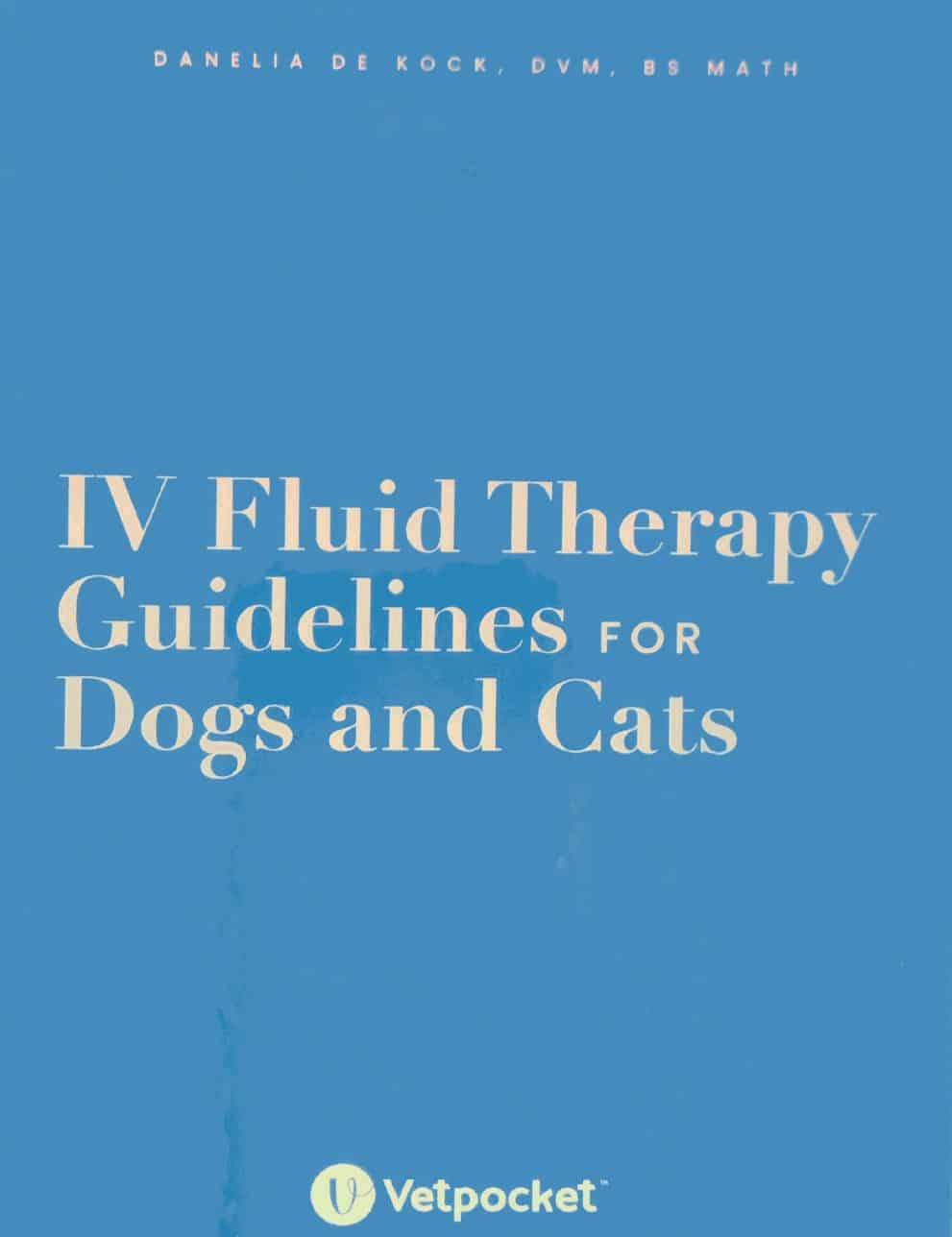
By Daniela de Kock
VetPocket IV Fluid Therapy Guidelines for Dogs and Cats is designed to address the confusion that still surrounds the use of IV fluid therapy in the veterinary profession—despite it being something we use on an almost daily basis.
To be fair, fluid therapy guidelines is an ever-evolving subject, and much like medical guidelines, gets updated periodically. It is, however, important to stay up to date with the most current research at the time. Fluid therapy is not benign and is considered to be a drug. It is extremely important that fluid therapy be used correctly. Incorrect usage or dosage can lead to, and has led to, amongst other adverse effects, fluid overload and death in patients. We can do better.
Images, tables, reference ranges and formulas are also included in VetPocket IV Fluid Therapy Guidelines for Dogs and Cats for easy understanding of the topics covered and for quick reference.
If you are unable to answer any of the questions posed above, or you just know you need some help with IV fluid therapy guidelines, then this is for YOU!















![Ettinger’s Textbook of Veterinary Internal Medicine 9th Edition [PDF+Videos] Ettinger’s Textbook of Veterinary Internal Medicine 9th Edition [True PDF+Videos]](https://www.vet-ebooks.com/wp-content/uploads/2024/10/ettingers-textbook-of-veterinary-internal-medicine-9th-edition-100x70.jpg)

![Textbook of Veterinary Diagnostic Radiology 8th Edition [PDF+Videos+Quizzes] Thrall’s Textbook of Veterinary Diagnostic Radiology, 8th edition PDF](https://www.vet-ebooks.com/wp-content/uploads/2019/09/textbook-of-veterinary-diagnostic-radiology-8th-edition-100x70.jpg)






